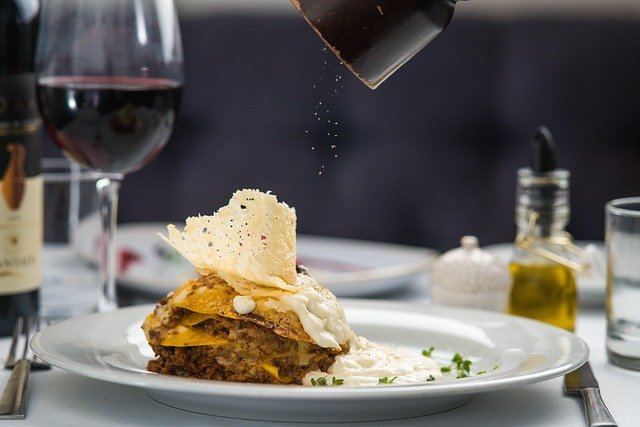Flavor-Packed Fusion: Reinventing Classic Dishes with Global Twists
Embark on a culinary journey that bridges continents and cultures through innovative flavor combinations. Discover how chefs and home cooks alike are revolutionizing traditional recipes by infusing them with international ingredients and techniques. This fusion trend is not just about mixing cuisines; it's about creating entirely new taste experiences that challenge our palates and expand our culinary horizons.

Fusion cooking often starts with a base dish from one culture and incorporates ingredients or techniques from another. For example, a traditional Italian risotto might be infused with Thai lemongrass and coconut milk, creating a creamy, aromatic dish that pays homage to both cuisines. The goal is to create a balanced dish where each element complements the others, resulting in a cohesive and memorable dining experience.
Global Ingredients in Local Kitchens
One of the driving forces behind the fusion cooking movement is the increased availability of global ingredients in local markets. Spices, sauces, and produce that were once considered exotic are now readily accessible to home cooks and professional chefs alike. This accessibility has opened up a world of possibilities for culinary experimentation and innovation.
Ingredients like miso paste, za’atar spice blend, and chimichurri sauce are finding their way into dishes far removed from their origins. A classic French ratatouille might be given a Mexican twist with the addition of chipotle peppers and queso fresco. Or a British shepherd’s pie could be transformed with the addition of Indian spices and a layer of creamy dal. These global ingredients add depth, complexity, and unexpected flavors to familiar dishes.
Fusion Techniques: Bridging Culinary Traditions
Fusion isn’t limited to ingredients; it also encompasses cooking techniques from various cultures. Chefs are increasingly blending different culinary methods to create unique textures and flavors. For instance, the French sous vide technique might be used to prepare meat for a traditional Chinese stir-fry, resulting in perfectly cooked protein with a wok-seared exterior.
Another example is the use of Japanese tempura batter to create a light, crispy coating for traditionally heavy Western fried foods. Or the application of Middle Eastern pickling techniques to preserve Scandinavian-inspired fish dishes. By combining these diverse cooking methods, chefs can create dishes that are both innovative and rooted in culinary tradition.
Fusion in Desserts and Beverages
The fusion trend extends beyond savory dishes into the realm of desserts and beverages. Pastry chefs are experimenting with unexpected flavor combinations, such as matcha green tea in French macarons or cardamom in Italian gelato. These cross-cultural sweets offer a delightful surprise to the palate and challenge our preconceptions about dessert flavors.
In the beverage world, mixologists are crafting cocktails that blend spirits and ingredients from different parts of the globe. A classic gin and tonic might be infused with Japanese yuzu and Thai basil, while a margarita could be reimagined with Indian mango and a chili-salt rim. These fusion drinks not only taste exciting but also tell a story of cultural exchange through flavor.
The Future of Fusion: Sustainability and Innovation
As the culinary world continues to evolve, fusion cooking is poised to play a significant role in addressing global challenges such as sustainability and food security. Chefs are increasingly looking to local, seasonal ingredients and applying global techniques to create dishes that are both environmentally conscious and culturally diverse.
This approach not only reduces the carbon footprint of our meals but also encourages culinary creativity and innovation. By combining traditional preservation methods with modern technology, chefs can create fusion dishes that are not only delicious but also help reduce food waste. The future of fusion cuisine lies in finding the perfect balance between innovation, tradition, and sustainability.
Useful Tips for Fusion Cooking
• Start with familiar flavors and gradually introduce new elements
• Research the cultural significance of ingredients to use them respectfully
• Balance flavors, textures, and cooking methods for a harmonious dish
• Experiment with fusion in small steps, like adding a new spice to a familiar recipe
• Don’t be afraid to mix sweet and savory elements for unexpected combinations
• Use fusion as a way to reduce food waste by creatively using leftover ingredients
• Document your experiments to refine and perfect your fusion creations
Fusion cooking represents a culinary adventure that celebrates diversity and creativity in the kitchen. By embracing global flavors and techniques, we open ourselves to a world of exciting taste experiences. Whether you’re a professional chef or a home cook, the possibilities for culinary fusion are limitless. So grab your apron, open your spice cabinet, and start your own fusion journey today. Who knows? You might just create the next global culinary sensation.





